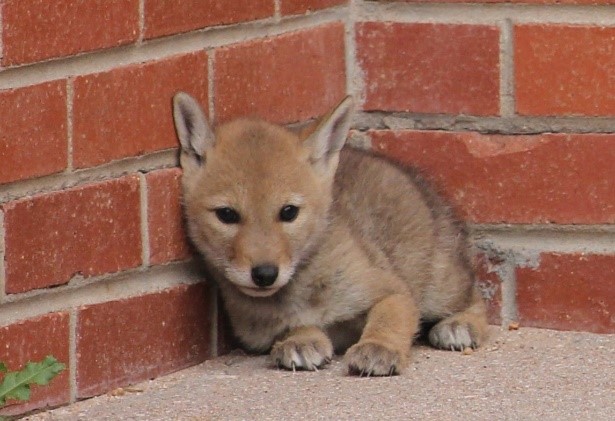On the heels of last year’s traumatic coyote-related events, the City of Burlington sent out a reminder to residents of the five actions they can take during denning season and beyond to ensure coyotes don’t get too comfortable around humans.
Last year saw four coyotes euthanized after seven people were attacked, invoking the harshest response under the city’s Coyote Response Strategy. Coyotes are not normally aggressive towards humans. The stalking and chasing behaviour and attacks experienced last year are abnormal and tend to result from habituation to humans or if coyotes are sick (Gehrt et al., 2009; White and Gehrt, 2009). Habituation, or coyotes becoming used to and unafraid of humans, occurs when humans feed them. The city
Accordingly, the number one piece of advice from the city to avoid such a situation this year?
Never feed coyotes.
In addition, the city recommends the following:
Never leave pets unattended
Do not leave your pets alone outside, even if your property is fenced, as coyotes may consider pets a threat to their territory; dogs should be kept on a short leash when walking.
Keep a tidy property
Maintaining a tidy property, free of garbage, food, long grass, brush, and wood piles, means that coyotes will not be attracted to make a den in your backyard. Motion-sensor lights on your property can also help deter coyotes.
Inspect your property.
Check any spaces under and around decks, sheds, or “similar structures” and keep them enclosed with “wire screening that extends at least 20 centimetres under the ground,” says the city.
Consistently haze coyotes.
The purpose of hazing, whenever and wherever coyotes are spotted, is to maintain their natural fear of humans. Hazing can be loud yelling or making other loud noises (with an air horn or whistle, for instance), waving your arms, throwing small rocks or large sticks near the coyote, or spraying coyotes with water from a hose or water gun filled with vinegar. The city also advises not to run away, but to stop, and back away slowly; pets and small children should be picked up off the ground.
Coyotes may become more aggressive during the breeding and pup-rearing seasons (January to April and May to August, respectively; Baker and Timm, 2017; Poessel et al., 2013; Lukasik and Alexander, 2011). In addition, coyotes in Burlington and around the Greater Toronto Area were found to use residential areas more often than natural areas during those seasons (Thompson et al., 2021), making following those city recommendations particularly important.
And if you do see someone feeding a coyote, you can report the incident to animalshelter.mailbox@burlington.ca. A fine or summons may result.
Sources:
Baker, R. O., and Timm, R. M. 2017. Coyote attacks on humans, 1970–2015: implications for reducing the risks. Human-Wildlife Interactions 11(2): 120–132.
Gehrt, S. D., Anchor, C., White, L. A. 2009. Home range and landscape use of coyotes in a metropolitan landscape: conflict or coexistence? Journal of Mammalogy 90(5): 1045–1057.
Lukasik, V. M., and Alexander, S. M. 2011. Human-coyote interactions in Calgary, Alberta. Human Dimensions of Wildlife 16: 114–127.
Poessel, S. A., Breck, S. W., Teel, T. L., Shwiff, S. A., Crooks, K. R., and Angeloni, L. 2013. Patterns of human-coyote conflicts in the Denver Metropolitan Area. The Journal of Wildlife Management 77(2): 297–305.
Thompson, C. A., Malcolm, J. R., and Patterson, B. R. 2021. Individual and temporal variation in use of residential areas by urban coyotes. Frontiers in Ecology and Evolution, https://doi.org/10.3389/fevo.2021.687504.
White, L. A., and Gehrt, S. D. 2009. Coyote attacks on humans in the United States and Canada. Human Dimensions of Wildlife 14: 419–432.




